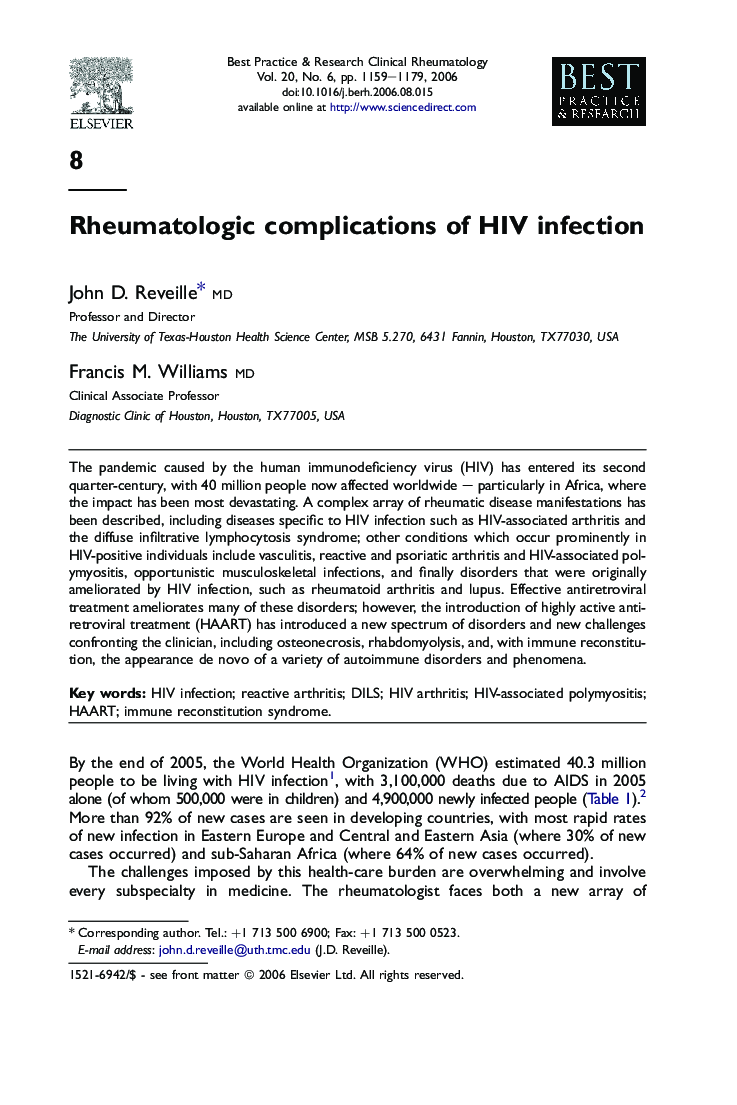| Article ID | Journal | Published Year | Pages | File Type |
|---|---|---|---|---|
| 3343568 | Best Practice & Research Clinical Rheumatology | 2006 | 21 Pages |
The pandemic caused by the human immunodeficiency virus (HIV) has entered its second quarter-century, with 40 million people now affected worldwide – particularly in Africa, where the impact has been most devastating. A complex array of rheumatic disease manifestations has been described, including diseases specific to HIV infection such as HIV-associated arthritis and the diffuse infiltrative lymphocytosis syndrome; other conditions which occur prominently in HIV-positive individuals include vasculitis, reactive and psoriatic arthritis and HIV-associated polymyositis, opportunistic musculoskeletal infections, and finally disorders that were originally ameliorated by HIV infection, such as rheumatoid arthritis and lupus. Effective antiretroviral treatment ameliorates many of these disorders; however, the introduction of highly active antiretroviral treatment (HAART) has introduced a new spectrum of disorders and new challenges confronting the clinician, including osteonecrosis, rhabdomyolysis, and, with immune reconstitution, the appearance de novo of a variety of autoimmune disorders and phenomena.
